 It’s funny, but you can always recognise a newly-qualified ADI. They know everything, and believe everything.
It’s funny, but you can always recognise a newly-qualified ADI. They know everything, and believe everything.
My last instructor…
In all the years I’ve been doing this job I have never – not once – had a pupil come to me and say “my old instructor got rid of me because I kept cancelling lessons or not showing up”, or any other explanation which puts any sort of blame on the speaker. And yet you get new ADIs expressing their shock when the pupil trots out their alternative explanation for what probably really happened. They believe every word of it.
I’ve got one at the moment (well, not anymore, but he doesn’t know yet), who arranged his first lesson with me for 7.30pm one evening about a week before Christmas. I texted him the day before to remind him, turned up the next night five minutes early, texted him that I was outside, and got a reply 10 minutes later: “can you pick me up from Nottingham, I’m still in town?” My mum had been rushed into hospital a few days before and I needed to go and see her, so I couldn’t extend the lesson time beyond what we’d already agreed – and I didn’t want to just on principle. I rearranged with him for a few days later (without charging him for the first one) and that lesson went ahead. We booked another lesson for the Christmas week – and I mean that he had specifically asked for the lesson on that date. I texted him a couple of hours before to remind him, and back came the reply: “can you do tomorrow [New Year’s Eve] instead? I’ve just literally come back off holiday”. I was fully booked and told him so, and I’ve not responded to his message asking if I had any free time next week because I know he works full time, and will end up wanting another late evening one, which – again on principle – I’m not happy doing. Oh yes, and when I asked him about his lesson goals, he wanted to pass his test “before the end of January”. He can find someone else.
Just about every learner I’ve ever taken on who has had lessons previously has had something bad to say about their last instructor. This one will undoubtedly have one ready for whoever gets him next – and if the ink is still wet on their green badge they’ll believe every word.
It can get really sinister, though. I live in dread of some retard making a false accusation against me just to ‘get even’ over some perceived slight. I notice on a forum at the moment a shiny new ADI is in the throes of publicising a particular Facebook page where some lunatic has reacted to his girlfriend’s issues with her instructor by plastering his name all over it and making accusations of a criminal nature (the accusations from both him and the typical prats who use social media are criminal, and if there’s any truth in them then they’re criminal on the instructor’s side). The shiny new ADI believes every word of it, even though it is effectively nothing to do with him and he knows nothing of the true details, which are contradictory to say the least, and he is prepared to take it further. You get lunatics on all sides of the fence, unfortunately!
He shouted at me…
When two people meet for the first time an initial bond or chemistry – attractive, repulsive, or neutral – is established based on each person’s make up. For mature people, this changes with time as they get to know each other, but for others – and especially if they are immature – this chemistry persists relatively unaltered for the entire time the partnership lasts. There are quite a few 17-year olds out there who are emotionally little more than half that age, and they see their driving instructor as both ‘an adult’ and ‘a teacher’ – two things to be hated at all costs – which immediately sets up a bad chemistry.
Emotionally immature people tend to want what I privately refer to as ‘pink’ lessons where, no matter how many people (including themselves and you) they just tried to remove from the gene pool, all they want to hear is “that was good, take your time, well done”. Anything else will be deemed ‘shouting’. Fortunately for them there are instructors out there who can provide such ‘pink’ lessons, and who are prepared to put up with immaturity in spite of the risks associated with putting immature people on the roads. I’m not one of them. The vast majority of pupils – even those who say they are nervous at the start – quickly gain confidence, and if lessons remain ‘pink’ for very long they start to feel stifled. I pick up quite a few who have jumped ship because they felt they were being held back. It probably wasn’t anything malicious or deliberate on the other instructor’s part – they’ve just ended up as victims of reality by trying to live up to their ‘friendly and patient’ claims no matter what!
Another thing to remember is that there’s a big difference between actual ability and perceived ability among nervous pupils. They tend to gauge their driving skills based on how they feel, and not on what they can actually do. Years ago I had a girl who was a brilliant driver but she hated driving, and her end-of-lesson assessments were always negative until we agreed that the baseline was how her driving compared with the previous lesson and not whether she had enjoyed herself.
In many cases, a pupil’s beef about not making progress with their last instructor might have been valid, though not for the reasons they have identified. Reading between the lines, some ADIs (as already noted) attempt to remain ‘pink’ at all costs and end up holding pupils back. Others appear to miss the signs and end up stepping on sensitive toes – and get accused of ‘shouting’. I can always tell if someone has been taught correctly based on how they drive, and in most cases they’ve been taught perfectly well. Any perceived problem seems to boil down to relevance rather than correctness.
You took them where…?
It makes me smile when I see a shiny new ADI criticising those who have been doing the job for a lot longer they have. Ironically, many of us have been doing it for longer than some of these will manage before giving up unless they wise up quickly.
Apparently, you shouldn’t take a pupil anywhere near a [insert detail here] for at least 30 hours. Examples of things that go in the blank space are:
- dual carriageway
- roundabout
- zebra crossing
- crossroads
- ‘major road’
The nice thing about this one is that you get it right from the horse’s mouth. And it is utter bollocks!
A few years ago I had a 17-year old pupil who passed his test after only 14½ hours of lessons. On his first lesson, with no previous experience in a car or on a motorcycle, after the initial controls and moving off/stopping exercises we moved from the side roads to bigger ones. Then we moved on to dual carriageways, and ended up doing a 25-mile round trip down the A46 (as close to a motorway as you can get without actually going on one). He handled it all as if he’d had many more hours of training, and was ecstatic at the end. Although he was undoubtedly the best (so far), I’ve had many others who picked everything up almost straight away, and passed in under 30 hours.
On average, at least 10% of my pupils are quite capable of handling larger roads – including dual carriageways – within an hour of commencing lessons. Well over 90% can handle it in the 2nd or 3rd hours. It should be said that a small but significant percentage can’t handle dual carriageways or various other situations in a way I am completely happy with even after 40 hours, and a smaller number still can’t be trusted even after 60 hours! It’s how the world works, but if you keep trundling around car parks and quiet industrial estates with people who really could be out in rush hour traffic, you’re not going to keep hold of them for very long – but thanks for keeping me in work, anyway!
OMG! You used the dual controls…?
Similar to the above, and based on the fact that many Part 3 trainers put it across to PDIs that you should only use the dual controls in an emergency. This is also bollocks, especially in the real world.
The dual controls are there to be used as needed. They’re great for demonstrating things, and as I have mentioned several times elsewhere, if I don’t trust someone in a given situation then my foot will hover over the brake or clutch pedals or even shadow them. Preserving my life and theirs comes way higher on my list of priorities than gambling on whether they’re going to brake in time when they’re already doing it later than I’d like and haven’t responded to prompting.
I blame the examiner…
A lot of those I take on have previously failed one or more tests, and it can be annoying when they reveal they’ve got another one booked already, even before I’ve seen them drive. In quite a few cases, their standard of driving is barely half way towards what I’d consider a typical test standard (indeed, most have only taken literally half the official average number of hours – and some of those turn out to be the types who would require more than the average anyway). The vast majority have something negative to say about their examiner – “he made me nervous”, “he was rude when I stalled”, and so on.
When someone tells me they failed for stalling, they will usually omit important details like “it was on a steep hill, I didn’t brake, we were rolling back faster and faster, and there were cars behind us. Then I stalled two more times when I tried to get going and the lights changed to red again. I stalled because I’d put it in 3rd gear and didn’t realise when I tried to get going again.”
It’s hard to be ‘pink’ (see definition above) when you can see your life flashing in front of your eyes, and I’d imagine this applies to examiners as much as anyone else. Let’s face it: if you’re an examiner, and you have to examine someone who perhaps shouldn’t be there in the first place who does something like this, you’re going to shit yourself! A driving test is not a driving lesson, and people taking them are assumed to be adults, so I, for one, would not condemn an examiner for being abrupt if something like that happened. I consider this when I get the story from a pupil. Actually, some pupils drive me nuts when they stall and then sit looking at me as if to say “what just happened?” as though they have never stalled before, as we enter freefall backwards down a steep slope. I can imagine how examiners must sometimes feel. Newly-qualified ADIs ought to think of this before they set off on their career-long crusade against DVSA.
They got out of the car?
Driving lessons are not the same as real world driving, especially when you are teaching someone something for the first time. When reversing round a corner, for example, you may well sit there for much longer than you would if you were just doing it for real, quite possibly with a few stalls mixed in for good measure. It’s not a crime.
Nor is it a crime if you ask a pupil to get out and have a look at the corner for training purposes (if it’s done safely and legally), and newly-qualified ADIs should bear this in mind before they start shooting their mouths off if they see another instructor doing it. You should never reverse if you aren’t sure what’s behind you, and getting out to check – safely and legally – is an accepted way of being sure. For the same reason, if you’re trying to get someone to understand how what they see in the mirror reflects where the car is in relation to a corner, what better way than getting out (safely and legally) to have a quick look? You wouldn’t do it on a busy major road, but on a quiet residential street or deserted industrial estate…?
If you pick up a pupil who tells you they did this with their last instructor, don’t assume that that instructor advised that they should always do it regardless of location or experience. It was probably their own way of teaching a new skill.
 This is funny. You’ve probably come across the various ‘assistants’ which respond to your voice on today’s computers and smartphones. One of the biggest at the moment is Alexa, Amazon’s assistant, and it comes with the Amazon Echo – a device that personally I can’t see the point of, but it appears quite a few other people can.
This is funny. You’ve probably come across the various ‘assistants’ which respond to your voice on today’s computers and smartphones. One of the biggest at the moment is Alexa, Amazon’s assistant, and it comes with the Amazon Echo – a device that personally I can’t see the point of, but it appears quite a few other people can.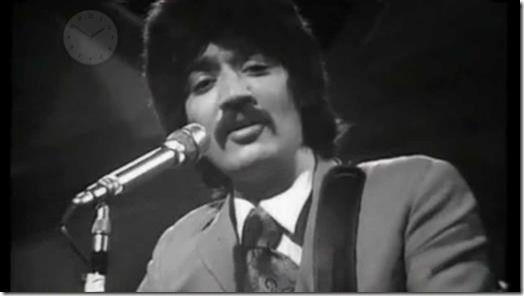 Last year seemed to have been a terrible year for legendary artists dying. It looks like 2017 isn’t going to give up on the trend, as I just read that Peter Sarstedt has died.
Last year seemed to have been a terrible year for legendary artists dying. It looks like 2017 isn’t going to give up on the trend, as I just read that Peter Sarstedt has died.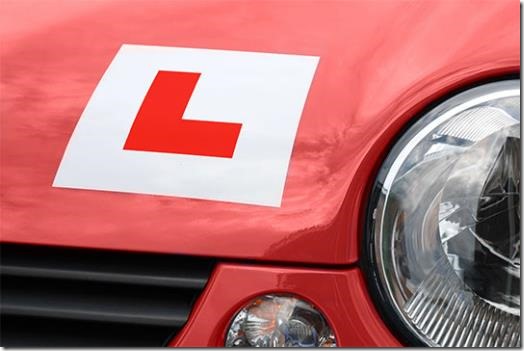 I covered this years ago when the blog was still young! It was around the time of the last big rush of people wanting to become driving instructors. You might also want to take a look at my longer article,
I covered this years ago when the blog was still young! It was around the time of the last big rush of people wanting to become driving instructors. You might also want to take a look at my longer article, 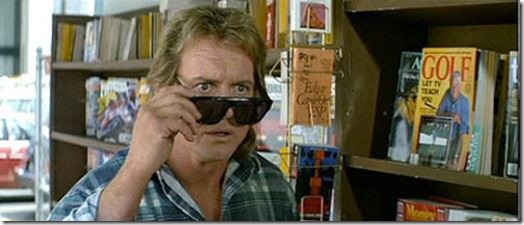 It’s funny, but you can always recognise a newly-qualified ADI. They know everything, and believe everything.
It’s funny, but you can always recognise a newly-qualified ADI. They know everything, and believe everything. This
This 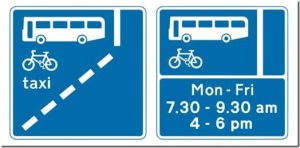 One fairly common reason people fail their driving tests is because they don’t use bus lanes properly. Unfortunately, a contributing factor is that very few so-called ‘experienced’ drivers know how to use them, either. And to make matters worse, the people who work for local councils and the contractors who produce bus lane signs also appear clueless.
One fairly common reason people fail their driving tests is because they don’t use bus lanes properly. Unfortunately, a contributing factor is that very few so-called ‘experienced’ drivers know how to use them, either. And to make matters worse, the people who work for local councils and the contractors who produce bus lane signs also appear clueless.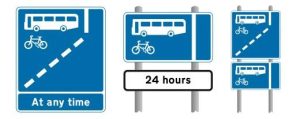


 It always seems to happen at this time of year. Famous people dying – although we’ve lost a lot of them during 2016. But I was
It always seems to happen at this time of year. Famous people dying – although we’ve lost a lot of them during 2016. But I was  I didn’t used to like Rio Ferdinand purely based on the fact that I’m an Arsenal fan and he played for Manchester Utd. After he retired, I never really thought much more about him. Then I saw this story in the media today.
I didn’t used to like Rio Ferdinand purely based on the fact that I’m an Arsenal fan and he played for Manchester Utd. After he retired, I never really thought much more about him. Then I saw this story in the media today.